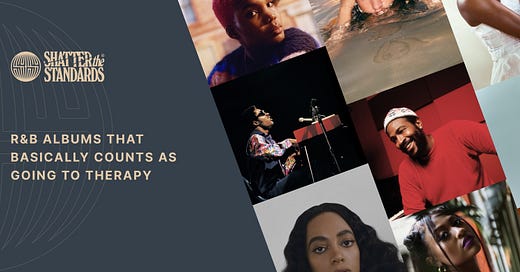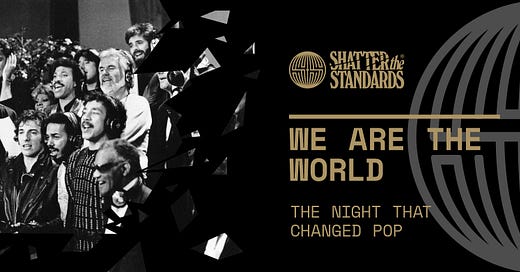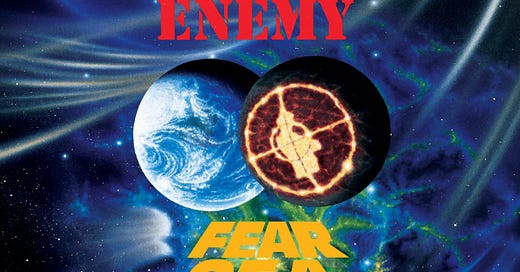
Rhymes That Resonate: A Tribute to Nas’ Exceptional Storytelling
We're unpacking the vivid imagery written into Nas’ lyrics.
The sun sets over the concrete jungles of Queensbridge, where the spirit of Nasty Nas, a titan of the rap industry, was birthed and bred. Nas, nee Nasir Jones, is an artist who deftly wields his lyrical brush to sketch vivid narratives that ring true in the hearts and minds of many. His gift for storytelling has been evident since his debut album Illmatic in 1994 — an opus noted for its gritty observations on urban realities, which he spun into poetic gold.
As we continue celebrating Hip Hop 50, few luminaries shine as brightly as Nas. His unparalleled ability to construct compelling narratives through his lyrics has allowed him to maintain a long-standing presence in an industry known for its erratic nature. This uncanny knack for eloquent storytelling effectively positions him as a raconteur par excellence - one who spins tales with an almost magical flair that leaves listeners bewitched and yearning for more.
Nas’ unique style intertwines potent metaphors with intricate wordplay against an audiotape that captures the spirit of New York’s pulsating streets. Each track becomes a canvas where he paints elaborate scenes that resonate deeply with his audience. With every release, Nas reaffirms his standing as one of the genre's greatest storytellers — crafting vivid tales that are intricately detailed yet universally relatable, offering a fascinating exploration into life’s joys and sorrows, triumphs and trials.
“One Love” (1994)
“One Love” is a lyrical love letter sent from Nas to his friends in prison, detailing their trials and tribulations inside and outside the jail. The track captures the raw essence of their unbreakable bond, etching out vividly raw scenes that transport listeners into the heart of Queensbridge. Through his words, Nas underscores themes of loyalty, survival, and the harsh realities of street life. His profound empathy shines throughout this song as he relays stories from home to those incarcerated.
“I Gave You Power” (1996)
“I Gave You Power” is a deeply metaphorical song wherein Nas personifies a gun, narrating its blood-stained journey through violence-stricken streets. This creative narrative serves as an indictment of reckless violence perpetuated by rampant gun usage in society. Each verse explores different facets of this object’s perspective, humanizing it while exposing its destructive power. The brilliance lies in how Nas uses this unusual perspective to shed light on societal issues. It’s storytelling that not only entertains but also provokes thought.
“The Set Up” (1996)
In “The Set Up,” featuring Havoc of Mobb Deep, Nas weaves an intricate tale about betrayal within inner-city circles. The track thrives on suspenseful storytelling with a crime narrative involving double-crossing associates. With his immersive narrative style and attention to detail, listeners can almost visualize the scenes unfolding as they listen. Each line builds anticipation towards the climactic finish, demonstrating Nas’ ability to hold audiences captive with his words.
“Suspect” (1996)
“Suspect” is another masterpiece where Nas paints a vivid picture of paranoia in neighborhoods plagued by crime and mistrust. Every verse reveals another layer of suspicion and tension among acquaintances who could be foes in disguise — effectively capturing the persistent unease within such environments. His lyrical brushstrokes meticulously outline an atmosphere rife with uncertainty and distrust.
“Shootouts” (1996)
“Shootouts,” as implied by its title, delves into chilling narratives about gunfights plaguing urban landscapes across America — Nas’ gifted penmanship intricately weaves together tales punctuated by bullet volleys echoing across concrete walls. He lays bare the brutal realities of these confrontations while pointing out their cyclical nature — making for an evocative commentary on street-life violence.
“Phone Tap” (1997)
In “Phone Tap,” Nas teams up with AZ, Dr. Dre, and Nature (as The Firm) to unfold a thrilling tale centered around unlawful surveillance tactics utilized by law enforcement agencies against individuals suspected of illegal activities — all seen through the eyes of those being surveilled. The tension escalates with every verse as paranoia builds among characters whose lives are constantly under scrutiny.
“Small World” (1999)
“Small World” spins an elaborate narrative about two strangers whose paths cross under unfortunate circumstances leading to unexpected twists — reminding us how interconnected our lives could be despite seeming otherwise at first glance.
“Undying Love” (1999)
Through “Undying Love,” Nas tells an emotionally charged story about infidelity and betrayal leading to tragic results — showcasing his ability to tap into deep emotional realms using poignant lyrics that resonate profoundly with audiences.
“Rewind” (2001)
Possibly one of hip-hop’s most unique narratives ever crafted appears in “Rewind.” Herein lie tales told backward — beginning from conclusion towards inception, displaying Nas’ innovative approach, attesting yet again why he remains one of rap history’s most respected lyricists.
“2nd Childhood” (2001)
With this DJ Premier-produced “2nd Childhood,” he vividly brings forth stories about adults trapped within their juvenile behaviors due mainly to their surroundings or circumstances — emphasizing societal norms inadvertently promoting stagnation rather than growth.
“Blaze a 50” (2002)
Emanating an aura of suspense, “Blaze a 50” is a meticulously woven narrative about deceit, greed, and vengeance within money and power. Nas’ masterful storytelling elevates this track into a cinematic experience, each verse unraveling like scenes from a riveting crime thriller. Its unexpected twist at the end exemplifies Nas’ ability to captivate listeners with his inventive storylines.
“Drunk by Myself” (2002)
Emotionally charged and introspective, “Drunk by Myself” offers a glimpse into Nas’ inner struggles with alcoholism. It’s a raw confession that starkly portrays the despair and solitude often accompanying addiction. The song’s candid narrative strength underlines Nas’ capacity to delve deep into personal experiences, transforming them into powerful lyrical content that touches upon universal human emotions.
“Poppa Was a Playa” (2002)
“Poppa Was a Playa” engages us with an honest portrayal of Nas’ relationship with his father. He explores complex themes of parenthood, love, and betrayal through vivid memories from his childhood. His nuanced storytelling in this track provides an intimate look into his past while shedding light on how those experiences shaped him as an artist.
“Fetus” (2002)
In “Fetus,” Nas adopts an incredibly innovative narrative approach by recounting life stories from his mother’s womb. The lyrics provide profound social commentaries about the world even before birth — highlighting early experiences that shape lives within challenging environments. This track solidifies Nas’s reputation as one of hip-hop’s most creative storytellers.
“Get Down” (2002)
The compelling track “Get Down” presents three distinct narratives intertwined around street life struggle and survival themes. Each story showcases different facets of hardship experienced by those living on society’s margins — demonstrating Nas’s uncanny ability to create relatable yet complex characters within his verses.
“Last Real Ni**a Alive” (2002)
The song “Last Real Ni**a Alive” is an engaging history lesson laying bare behind-the-scenes dynamics during the golden era of East Coast hip-hop through Nas’ eyes. He touches upon personal rivalries and alliances in the industry while offering insights into his career trajectory — further cementing his place as one of rap’s most insightful commentators.
“Surviving the Times” (2007)
In “Surviving the Times,” Nas chronicles critical milestones in both his life journey and illustrious rap career — marking trials endured and triumphs achieved over time. This autobiographical piece underscores his evolution as an individual and artist, substantiating how perseverance can mold unique success stories.
“A Queens Story” (2012)
“A Queens Story” pays homage to Queensbridge — the neighborhood where Nas grew up, which holds profound influence over his music. Through captivating narratives reflecting local culture steeped amid violence, he paints detailed portraits resonating deeply with those familiar with such environments while providing insights for outsiders alike.
“Blue Benz” (2020)
Revisiting luxury car motifs prevalent across hip-hop narratives in “Blue Benz,” he weaves nostalgic tales around this symbol signifying success achieved against all odds — reflecting societal aspirations born from disadvantaged backgrounds.
“Death Row East” (2021)
Lastly, “Death Row East” delves into historical events about the infamous East Coast-West Coast rivalry, which significantly impacted 90s hip-hop culture (and the beef with 2Pac) — offering fresh perspectives rarely explored within these narratives.











